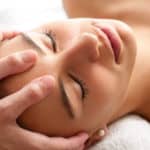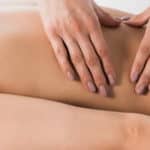Our bodies are glorious machines. Just like an automobile, we need regular operation to function optimally. If a car is not driven for an extended period of time, it won’t operate as smoothly as a regularly used vehicle. When an automobile runs, motor oil and gasoline are distributed throughout the engine, ensuring proper lubrication and fluid distribution. When it sits, these substances stagnate, and consequences result: rust, seal (gasket) deterioration and fluid thickening. Our bodies function in much the same way because, like automobiles, we are created for movement. Without movement, our muscles shorten, tighten and weaken, and our fluids (blood, lymph, synovial fluid) fail to circulate and deliver nutrients, lubricate muscles and joints and remove waste. The analogy of a car needing to be driven may help your clients that are disconnected with their body’s needs.
Living an active lifestyle can be like the Myth of Sisyphus. We all aspire to it, yet for many people, it seems to be just out of reach. Sitting in front of a computer all day, juggling the demands of career and family and the drain of fatigue all can contribute to someone’s lack of activity. Studies have found that the biggest health benefits come from transitioning from being sedentary to adhering to moderate and regular exercise. Overcoming the roadblocks to exercise can be as simple as finding an activity that brings you joy, doing it together with a friend or receiving a nudge from the right person.
As a member of the healthcare profession, massage therapists are in a unique position for administering advice. While you may be fully aware of the health benefits (physical and emotional) of physical activity, sharing this information with your clients can be the best prescription you can give. According to Dr. Weil in the August 2004 edition of Self Healing, he discusses the power of practitioner motivation in the article “Finding Joy in Movement.” He says that simply inquiring about your client’s exercise habits and encouraging them to find an activity that is appealing to them may be the closest thing to a “magic bullet” for health that is available. Research shows that the advice and motivation provided by a healthcare professional has the power of superseding any obstacles to client compliance.
Regular exercisers do it because it makes them feel good, and they have a good time doing it. If you inquire about your client’s personal joys, you might be better equipped to offer specific suggestions. Some ideas include dancing, yoga, tai chi, hiking, basketball, rowing, swimming or even walking in a favorite setting (a park, mall or neighborhood of Victorian houses). The more enjoyment a person receives from their exercise, the more likely they are to make it habitual. The bottom line is — find a method of movement that brings you joy because this body was made for moving!















